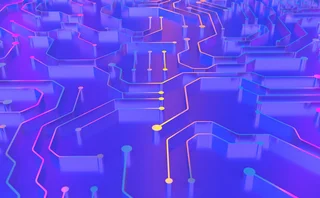
Technology vendor of the year: Murex
Asia Risk Technology Awards 2019

Size and incumbency can often take the edge off a company, breeding complacency and stifling innovation through organisational inertia. Not so with Murex. It has made sure to learn from its many implementations across a broad client base just how to build and deliver effective applications that meet real clients’ needs. And it continues to take active measures to remain responsive and to exploit advances in technology and development methods.
“Murex’s success and rapid organic growth has been fuelled by a significant investment in research and development – over $1 billion in the past 10 years – and the continuous commitment to helping clients meet increasing regulatory obligations, while navigating growing systems’ complexity,” says Guy Otayek, chief executive officer, Murex Asia-Pacific.
Murex has been in Asia-Pacific since 1994 and now has offices in Australia, Beijing, Hong Kong, Seoul and Singapore. More than 60 institutions in the region use its MX.3 cross-asset, front-to-back-to-risk platform for treasury and capital markets operations.
The company has consolidated its position in the region this year, with a record number of new projects and deals, including five new clients across China, Hong Kong, Indonesia and Singapore. Four of the new clients are major banks that will replace fragmented legacy systems with MX.3 for cross-asset class, front-to-back operations. The fifth is a Singaporean commodities house that was looking for a best-of-breed, front-to-risk-to-back commodities solution deployed exclusively on the cloud.
The almost 60 new projects initiated for existing clients cover systems rationalisation, business expansion and business and technology modernisation – particularly migration to cloud.
Murex itself began adapting its software for cloud operation in 2017, certifying its compatibility with Microsoft Azure and Amazon Web Services (AWS) cloud services that year. It has since been evolving the technology stack supported and used by MX.3 to facilitate the adoption of cloud by its client base. Latest releases of MX.3 are optimised for the cloud to take advantage of features, such as distributed relational databases and integral disaster-recovery arrangements.
“We are currently developing new features and services that will allow our clients to benefit from native hybrid deployment where their MX.3 platform remains on-premise and some part of the business processes are executed in a public cloud,” Otayek says.
Early examples of this approach are the calculation of various valuation adjustments and Fundamental Review of the Trading Book and market risk computation. In addition, Murex’s software-as-a-service version of MX.3 will be available on either a private or a public cloud (AWS) in 2019.
“Internally, we are also migrating some of our own workloads, in particular our testing infrastructure, to the cloud,” says Otayek.
We are currently developing new features and services that will allow our clients to benefit from native hybrid deployment where their MX.3 platform remains on-premise and some part of the business processes are executed in a public cloud
Guy Otayek, Murex
Murex has put considerable effort and resources into transforming its software development and deployment approach recently, with a complete migration to an ‘agile’ development discipline and ‘DevOps’ continuous delivery and integration methodology for new functionality and software improvements. Murex has trained more than 1,000 staff – around half the company – in the new approach, which has already started to bear fruit. For example, a full testing cycle has been reduced from five days to just one hour, making it possible to run the test cycle for each new customer configuration.
Advanced technologies Murex is now embracing include Pivotal GemFire in-memory data grids and Apache Spark cluster computing to solve real-time complex computational problems, Docker and Kubernetes ‘container’ technology for improved deployment and operability of MX.3 and its business applications, and Splunk and Grafana apps for efficient monitoring of the platform.
Among recent additions Murex has made to toolkit for clients are MX Control Tower, a business intelligence application that provides management with essential activity, performance and risk indicators, and MX Trade Data Synchronizer, an integration platform that can connect several different front-office systems to pool positions into MX.3. Murex is currently implementing the latter at an Australian bank for importing and re-synchronising positions on a daily and intra-day basis for risk calculations.
Murex’s long-term strategy of a single integrated platform covering sales, trading, investment management, treasury, operations, finance, collateral management and enterprise across all asset classes is paying off in the current industry environment. A growing number of institutions desperate to reduce technology complexity and costs and improve efficiency are looking to consolidation of their applications on a unified platform as the answer.
Murex clients taking this approach include two Japanese banks that went live on all derivatives front-to-back-to-risk last year; an Indian, a Chinese and a Thai bank that are integrating their cash and derivatives activities on MX.3; and one Australian bank that has added its structured finance to its other businesses already on MX.3, and another that has added commodity derivatives.
“All of these projects allowed the banks to remove several legacy systems from their IT landscape, rationalise their processes for better efficiency, and unlock their capacity for growth,” says Otayek. Furthermore, a number of banks in the region, after implementing MX.3 in their headquarters, are using the platform to unite their operations across branches, countries and regions.
“These projects and client success stories across the region illustrate the strategic value that our customers see in their long-term partnerships with Murex. With a unique mix of product capabilities, local market expertise and knowledge-sharing, we enable Asia-Pacific firms using MX.3 to meet ambitious growth objectives, time and again,” Otayek says.
An Asia Risk judge says: “Murex has made a lot of good technology choices over the years. It has strong and well-resourced local technology services and a clear development path on product and cloud enhancements.”
Only users who have a paid subscription or are part of a corporate subscription are able to print or copy content.
To access these options, along with all other subscription benefits, please contact info@risk.net or view our subscription options here: http://subscriptions.risk.net/subscribe
You are currently unable to print this content. Please contact info@risk.net to find out more.
You are currently unable to copy this content. Please contact info@risk.net to find out more.
Copyright Infopro Digital Limited. All rights reserved.
As outlined in our terms and conditions, https://www.infopro-digital.com/terms-and-conditions/subscriptions/ (point 2.4), printing is limited to a single copy.
If you would like to purchase additional rights please email info@risk.net
Copyright Infopro Digital Limited. All rights reserved.
You may share this content using our article tools. As outlined in our terms and conditions, https://www.infopro-digital.com/terms-and-conditions/subscriptions/ (clause 2.4), an Authorised User may only make one copy of the materials for their own personal use. You must also comply with the restrictions in clause 2.5.
If you would like to purchase additional rights please email info@risk.net
More on Awards
Trading systems: structured products/cross-asset – Murex
Murex won the Trading systems: structured products/cross-asset award at the 2025 Risk Markets Technology Awards for its MX.3 platform, praised for its flexibility and advanced analytics
Best vendor for system support and implementation: Murex
Murex has won the Best vendor for system support and implementation at the Risk Markets Technology Awards, recognised for its innovative MX.3 platform, exceptional client support and seamless implementation services
FRTB-IMA product of the year: Murex
Murex wins FRTB-IMA product of the year for its advanced, scalable MX.3 platform enabling seamless regulatory compliance
Pricing and analytics: equities – Finastra
Finastra’s Sophis platform wins the Risk Markets Technology Award for Pricing and analytics in equities, recognised for its robust capabilities in equities and derivatives trading
Best execution product of the year: Tradefeedr
Tradefeedr won Best execution product of the year for its API platform, which standardises and streamlines FX trading data, enabling better performance analysis and collaboration across financial institutions
Collateral management and optimisation product of the year: LSEG Post Trade
LSEG Post Trade wins Collateral management and optimisation product of the year for interconnected services that help mitigate counterparty risk and optimise capital usage
Clearing house of the year: LCH
Risk Awards 2025: LCH outshines rivals in its commitment to innovation and co-operation with clearing members
Driving innovation in risk management and technology
ActiveViam secured three major wins at the Risk Markets Technology Awards 2025 through its commitment to innovation in risk management and technology







